'I blitzed it. Nothing survived. If you have one bit of surviving bindweed, you will have it forever’: A peek in to the ruthless world of the gravel garden
Since they appeared in the 1990s, gravel gardens have grown in popularity, especially in recent years. What are the keys for success? Non Morris asks some of Britain's top experts in the field, from the brutal work needed to get started through to the plants that only work 'if you get rid of soil entirely'.
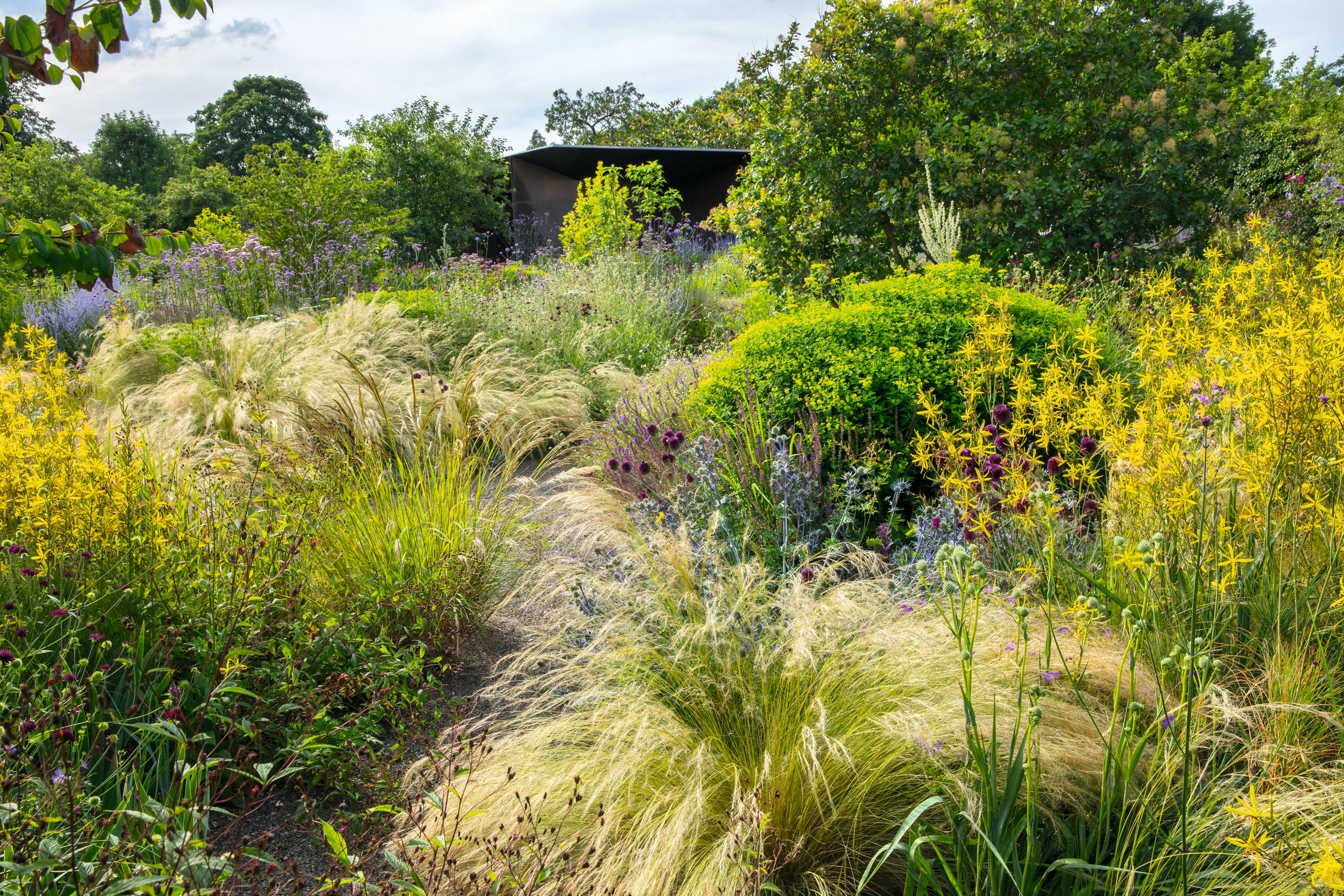

It feels like a moment of change for the gravel garden. The Walled Garden at Knepp, West Sussex, led the way with its transformation of a flat croquet lawn into an exquisite biodiverse haven, with the plantsmen Prof James Hitchmough and Tom Stuart-Smith casting their own spells on different combinations of sand, gravel and crushed brick. Dan Pearson has followed suit, adding an inspiring sand garden to his beautiful domain in Somerset, and Sarah Price has created a dry garden in the old walled kitchen garden at her Abergavenny home in Wales, removing the topsoil and adding a mix of recycled sand, gravel and rubble to create an immersive space that dances with delicate sun-loving plants and wildflowers.
Have things changed so much since Beth Chatto in Essex and Derry Watkins near Bath created the first radical, experimental gravel gardens in the UK in the early 1990s? What is the advice for the gardener contemplating a gravel garden today? Do you need to remove topsoil? Can you make a gravel garden on heavy clay? Is a gravel garden low maintenance or does it need expertise? Importantly, should we all switch to a growing substrate other than gravel to keep up with the times?
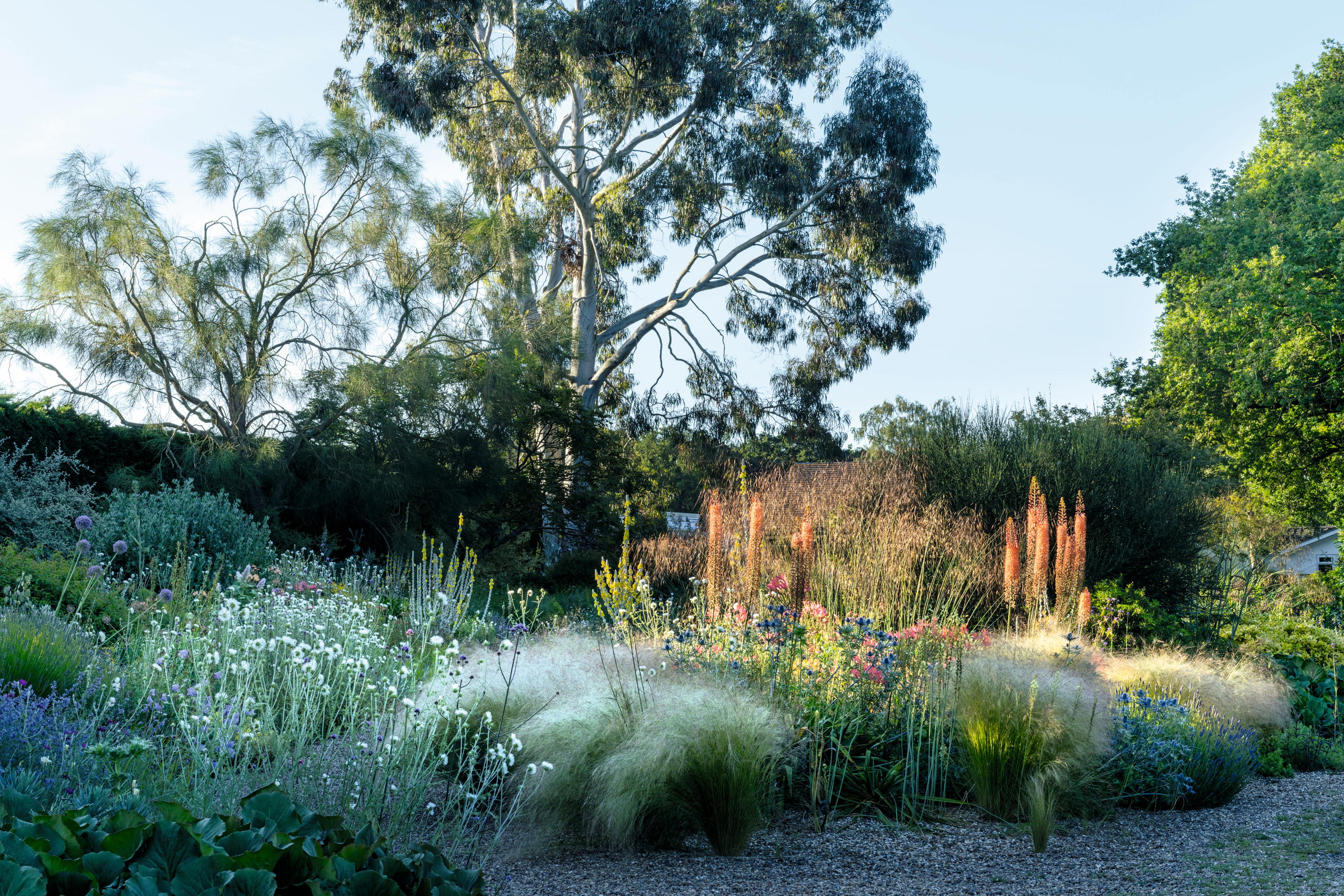
Grasses and perennial plants, such as eremurus and eryngiums in the gravel garden that was originally made by Beth Chatto in 1992, on the old car park of her Essex nursery as an experiment in drought-resistant planting.
It is a relief to talk to Ms Watkins (whose wonderful Special Plants Nursery sits next door to her hillside garden near Bath): ‘I don’t think it matters whether it is gravel or sand or crushed lavatory — in my experience, if you have created amazing drainage, plants will grow’.
Ms Watkins, clamouring 30 years ago to grow Mediterranean plants on her sticky West Country clay, laid 8in of gravel directly on the existing soil. Before she began, she made sure to clear the perennial weeds. ‘I blitzed it — I went in three times, over a whole summer. Nothing survived. If you have one bit of surviving bindweed, you will have it forever.’
Plants she had not dared try before thrived and have lived long lives. ‘I plant small, soak the plants until they are sopping before they go in and then leave them be.’ She admires the way gravel shows off different shapes and textures and the way it offers the visitor freedom to choose their own paths through the planting, but most of all she loves the resultant ‘no watering, no feeding, no staking, no mulching and no weeding’. There are unwanted ash-tree seedlings, but otherwise she is adamant that, apart from occasional cutting back, her deep gravel mulch makes for a no-maintenance garden.
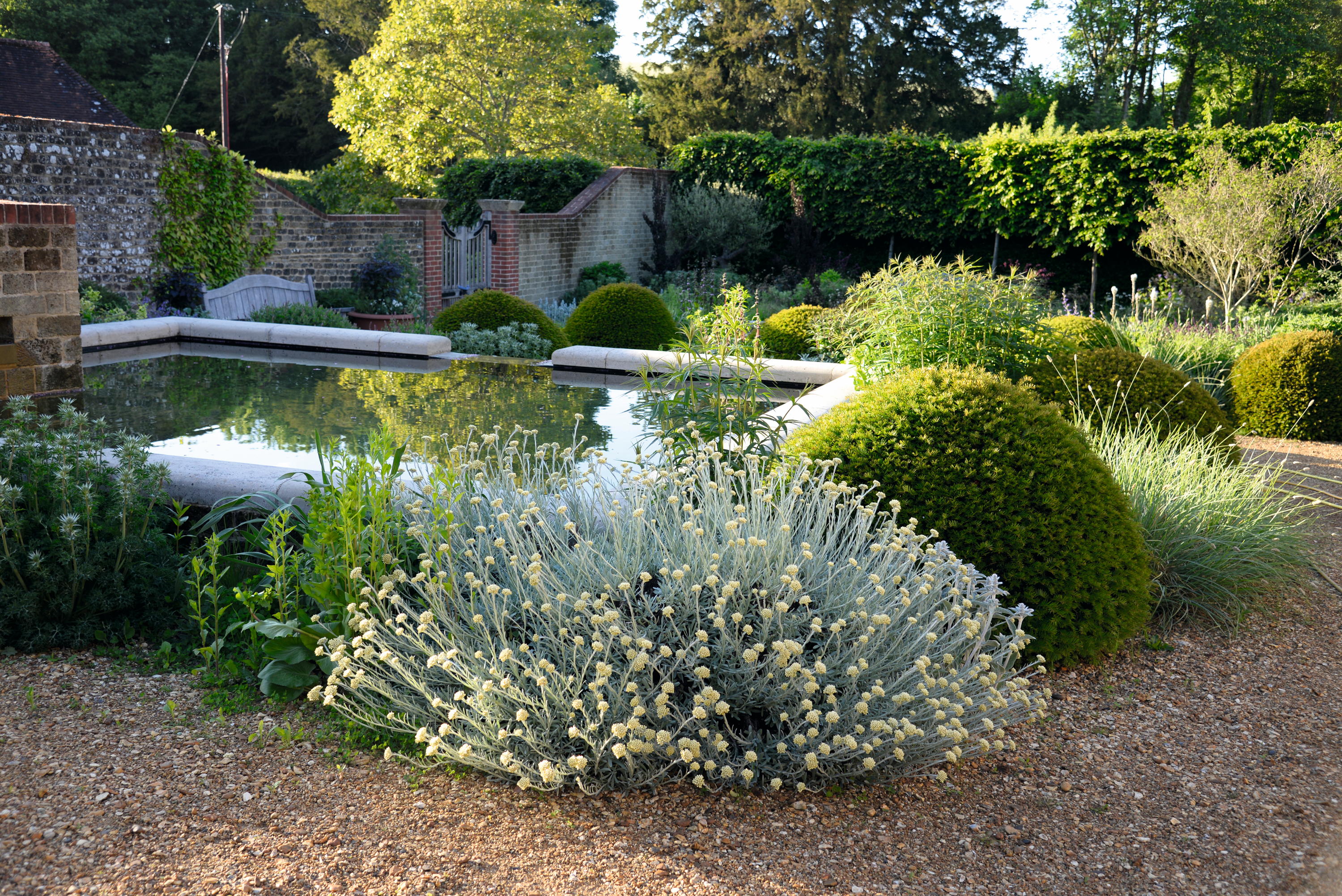
Helichrysum italicum, the curry plant, contrasting with neat box mounds at Woolbeding garden near Midhurst in West Sussex, which was designed by Julian and Isabel Bannerman.
Head gardener Åsa Gregers-Warg and Julia Boulton — Beth Chatto’s granddaughter, now chairman of the renowned Beth Chatto Gardens — look at things rather differently.
‘When I arrived here 12 years ago, I thought the Gravel Garden would be low maintenance, but, because of the way we garden, it needs a lot of time and horticultural expertise,’ explains Ms Boulton. ‘Key for us is that the Gravel Garden is on 5m–6m [16½–19½ft] of thin, poor soil. It is all about Beth’s mantra, “right plant, right place”.’
Exquisite houses, the beauty of Nature, and how to get the most from your life, straight to your inbox.
The Gravel Garden famously began as a car park. When a bigger car park was created nearby, Chatto seized the chance to create an unirrigated garden in one of the driest parts of the country. ‘Beth’s approach was to leave deliberate gaps and select tough species that self-seed prolifically,’ adds Ms Gregers-Warg. ‘We rely a lot on annuals and biennials. The skill is in the editing: we try to paint a picture every time we go in.’
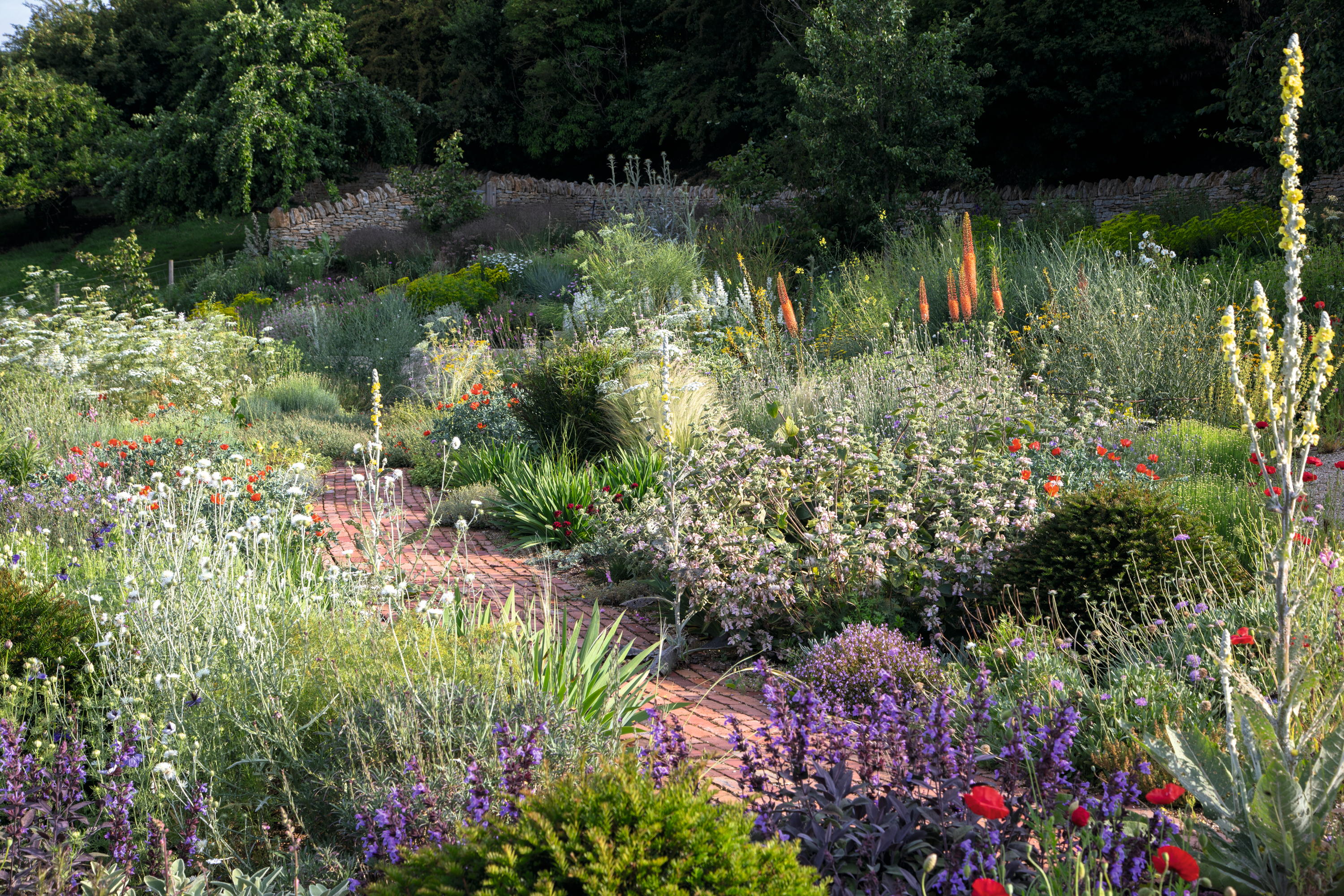
Small plants went straight into a sharp sand mulch of 6in–8in at Dan Pearson’s Somerset garden, deep enough to stop worm casting
Ms Gregers Warg agrees that beginning with weed-free soil is crucial. The Beth Chatto way is to dig in a small amount of low-nutrient composted green waste, saturate the plants before planting, to plant in spring or autumn and to mulch with a 1in layer of 10mm gravel. Something such as Verbena bonariensis might be cut down by half in an extremely dry summer, but otherwise there is no watering.
Mr Stuart-Smith had a transformational encounter with gravel in the Piet Oudolf borders at RHS Wisley in Surrey. ‘We agreed to try a thick mineral mulch instead of a conventional mulch and the change was instant.’ He has since created classic gravel gardens, for example the beautiful Walled Garden at Culham Court, Berkshire, where the planting is delicate and immersive — tiny pink heads of Dianthus carthusianorum suspended in feathery Stipa tenuissima — but he has also relished experimenting in the Plant Library around his studio at Serge Hill in Hertfordshire. He is astounded by the success of growing previously impossible sun-loving plants in deep sand. ‘By introducing a level of stress — the full Gordonstoun upbringing — you allow plants to put down good long roots and grow in a more compact way.’
Although increasingly a believer in a leaner soil mix, Emily Erlam is wary of removing topsoil and importing new growing mediums unnecessarily. The enchanting stone-walled garden she designed at a farmhouse on the Chatsworth estate in Derbyshire ‘is very low tech, we used local soil with a mulch of sand and gravel to connect everything together’. Gravel gardens, she says, ‘give you the chance for plants to shimmer. Domes and vases are key, I might use groups of the rounded Santolina chamaecyparissus with Helichrysum italicum, so the curry-plant flowers hover above’. Her Chatsworth garden needs an expert gardener to identify young seedlings, but the solution for a low-maintenance gravel garden is to design with a simpler planting palette. ‘I’m currently designing a garden with mostly amsonia and festuca — leaving room for a few delights in between.’
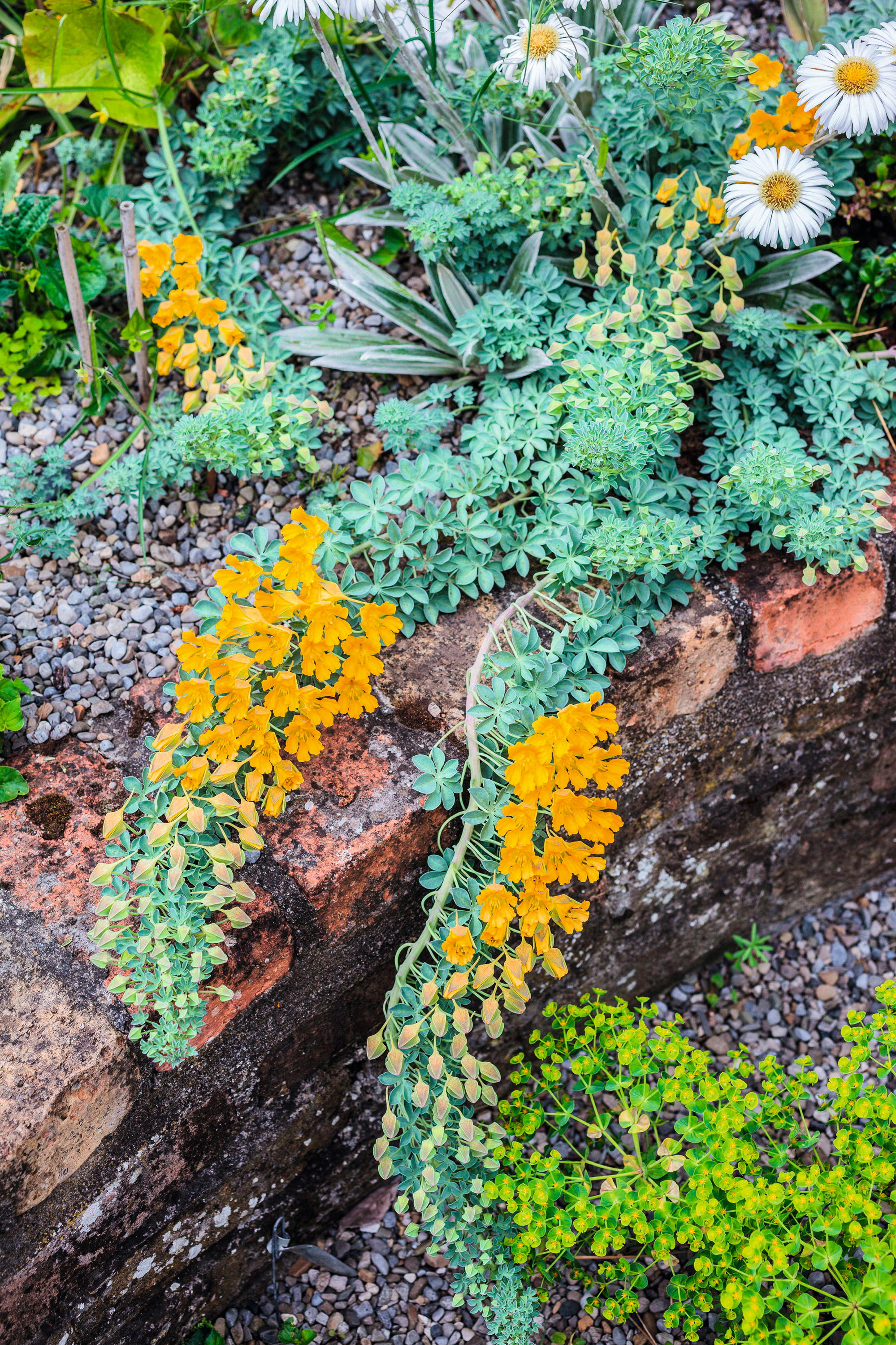
Tropaeolum polyphyllum, a hardy nasturtium from Chile, which can be tricky to get hold of, although Derry Watkins does sometimes have seeds available.
The seductive, seemingly relaxed gravel garden is both here to stay and continuing to evolve. A gravel garden may not be as low maintenance as you hope, but you can keep it simply with a deep layer of gravel or tight planting palette. If you embrace the wonder of self-seeding, your reward is a garden that will offer something new and unexpected. The other reward, if you follow the example of Chatto, is the chance to pot up any unwanted seedlings and offer them for sale.
The best plants for gravel gardens
You're spoilt for choice when choosing plants that thrive in sharp drainage — here are some suggestions from four of Britain's best garden designers.
Tom Stuart-Smith
- Seseli hippomarathrum: ‘I love this plant. Such a neat, drought-tolerant umbel that seeds itself politely’
- Dianthus carthusianorum: ‘Another plant liable to be smothered by bullies in normal garden soil’
- Salvia candelabrum: ‘A wonderful plant with violet-blue flowers, but it will rot in winter unless given the sharpest treatment’
- Melica ciliata: ‘Treated lean and mean, this grass will stand up rather than flop. Although it can seed around too much for a tidy gardener, it creates a good foil for other plants in dry sunny gardens’
- Euphorbia rigida: ‘I can’t not have euphorbia. E. rigida is not worth growing unless you eliminate soil altogether’
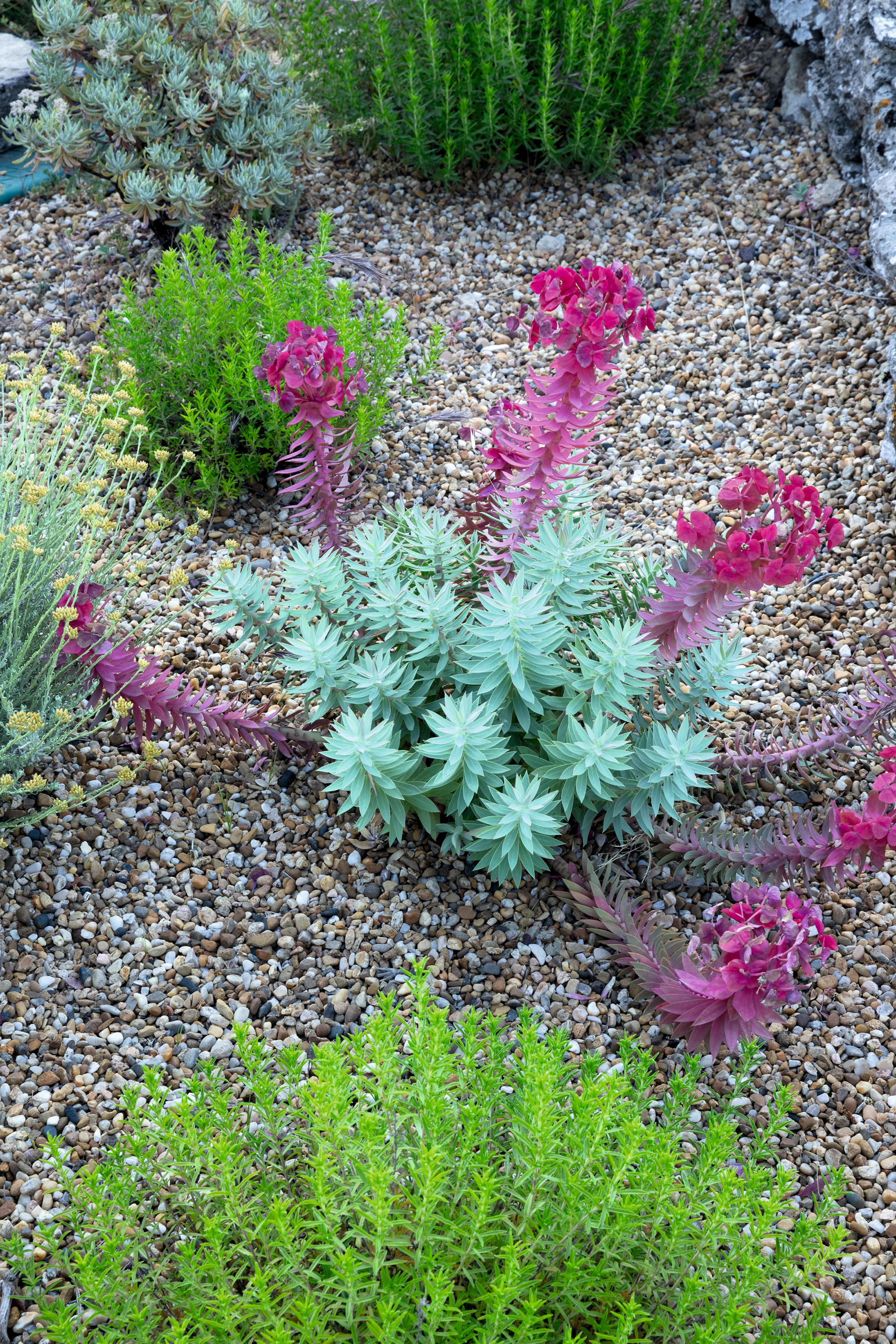
Fully hardy and clump forming, the extraordinary-looking Euphorbia rigida is not worth growing unless you eliminate soil entirely, emphasises Mr Stuart-Smith
Derry Watkins
- Eryngium x zabelii: ‘Sea holly adores gravel. it doesn’t self-seed, but gently wanders to create a handsome group.’
- Origanum ‘Kent Beauty’: ‘It won’t tolerate a minute in the ground, but loves gravel’
- Salvia greggii ‘Stormy Pink’: ‘This blooms all summer, mine has lived here for more than 20 years. Shrubby salvias are essential — prune hard in spring’
- Yucca rostrata ‘Sapphire Skies’: So beautiful all year, the long blue-grey leaves twist and catch the light’
- Tropaeolum polyphyllum: ‘An exquisite hardy perennial nasturtium that comes from Chile. Almost impossible to get hold of, but sometimes I do have fat green seeds for sale…’
Åsa Gregers-Warg
- Stipa gigantea: ‘You always need a grass. S. gigantea is brilliant because of its height, because it flowers from early summer into the winter and because it is see-through. Even in a smaller garden, it does not block your view’
- Oenothera lindheimeri: ‘A fantastic good doer, it starts flowering in May and, if you keep dead-heading, will carry on until November’
- Euphorbia characias: ‘Choose this for its limey flowers in spring and its marvellous structure the rest of the year’
- Cistus x pulverulentus: ‘This is a great flowering shrub to plant alongside the euphorbia. It is perfect for a smaller space, evergreen with grey-green foliage and magenta flowers’
- Thymus ‘Redstart’: ‘A low creeping plant is essential. This is a favourite, with mats of luscious dark-green foliage and masses of pink flowers in spring and summer’
For more information, see www.specialplants.net, www.bethchatto.co.uk, www.sergehillproject.co.uk, and www.erlamstudio.com
